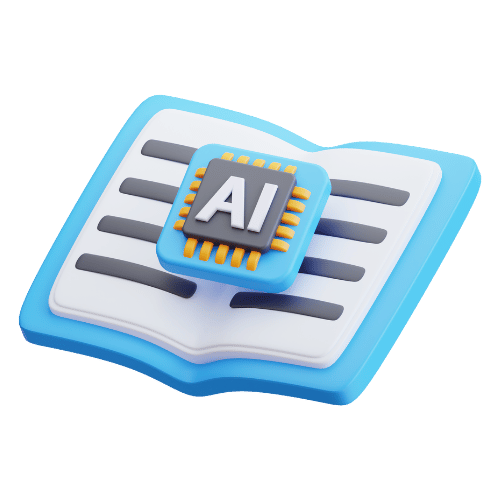Artificial intelligence is now a part of the global education industry in various ways. It provides teachers with opportunities to save time and improve the quality of work. Here, we’ll discuss the revelations of the latest Gallup research about teachers and AI adoption.
Artificial intelligence has been reshaping the education industry worldwide by integrating technology with learning. Different countries have adopted various approaches to utilizing AI in education, although the core requirements remain the same: personalization, automation, and engagement.
The African continent has also been witnessing a surge in AI adoption in education, although the scenario is somewhat different. While AI for teachers is a prominent part of the process, other factors like shortages in teachers, lack of access to reliable internet, diverse linguistic needs, and financial constraints create roadblocks.
That said, businesses like Eneza Education, uLesson, or Ustad Mobile have risen to the challenge by offering AI-powered learning platforms, educational chatbots, virtual tutors, etc., to provide better learning opportunities for students. Kolibri by Learning Equality is another solution focusing on translating the study material into local African languages like Amharic or Swahili. With over 2000 native languages spoken across the continent, AI will continue to play a vital role in bridging the linguistic barrier.
Providing AI tools for teachers is one of the hot topics of discussion. Experts argue that teachers should be supported by offering them quality training to equip them with the necessary skills to increase the learning standards in the classrooms. At the same time, teachers need solutions to reduce the time spent on non-teaching activities such as creating assignments, conducting tests, grading answer sheets, etc. Moreover, there’s a need to attract more qualified and eligible candidates to become teachers and prevent teacher shortages in the coming years.
A report says that the primary schools in Sub-Saharan Africa have an average of 40+ students in each class (per teacher). This is almost double the global average and indicates the extent of pressure on teachers to fulfil their responsibilities. In such instances, it becomes even more essential to empower teachers with robust and efficient AI tools to streamline their teaching and non-teaching activities at schools.
The Latest Gallup Report on Teachers and AI Adoption
Gallup posted the findings of a survey conducted in the US regarding teachers and AI adoption. A sample of 2,232 U.S. teachers of K-12 education in public schools participated in the online survey conducted by the Walton Family Foundation and Gallup. Named the Teaching for Tomorrow: Unlocking Six Weeks a Year With AI, the report gave interesting insights regarding AI for teachers, the frequency of using AI tools, and what teachers feel about AI in education.
It showed that teachers used AI tools mostly to support teaching and automate the related activities like preparation, creating materials, and customizing lessons. Almost 25% of teachers used AI for creating quizzes, cognitive learning assessments, etc., at least once a month, while another 15% used AI once every few months for the same purposes.

Additionally, 84% of teachers reported that they saved time by relying on AI to create worksheets, assignments, etc., while 83% of them saved time by automating assessments using a reliable talent assessment tool. 63% of them also used the AI solutions to analyse patterns in the students’ learning journey or their performance in tests. Since AI assessment tools like PrepAI also provide in-depth analytics, it creates a great opportunity for more teachers to use the insights to track students’ performance throughout the educational year and help them with personalized one-to-one feedback.
The report went on to explore how teachers benefited from using AI for teaching and administrative activities. After all, 81% of teachers said they saved time by using AI for admin work. Termed as the AI dividend, the findings showed that teachers who use AI weekly saved around 5.9 hours on average. This added up to an equivalent of six weeks for an educational year of 37.4 weeks.
Imagine that!
It is a clear indication that consistent and effective use of AI for teachers can save them valuable time and reduce the workload without compromising quality. It creates space to focus on providing better learning and growth opportunities for students and ensures teachers have enough time for their personal lives.
57% of teachers admitted that using AI weekly for grading has also increased the quality of work. By integrating AI assessment tools into their systems, schools can maintain test integrity and help teachers quickly grade the submissions to provide useful feedback to students. It also reduces subconscious bias, human errors, etc., that can affect the grading process.
An interesting observation is that teachers who benefit from AI tools are the ones who actively and consistently use them at work. Teachers who used AI tools less frequently or on a monthly basis than weekly saved fewer hours. It also had a lesser impact on the quality of the outcome.
In short, the Gallup research emphasizes that AI can assist teachers in many ways when used regularly and effectively. Teachers who use the right tools for the right activities can enjoy many benefits of combining technology with education.
Common Examples of AI in Education
Here are a few AI in education examples that are commonly used by teachers from different parts of the world at varying frequencies.
eLearning Platforms
From Google Classroom to Kahoot!, various eLearning platforms offer personalized learning options for students and allow teachers to streamline lessons in various formats. The best part is that they can be integrated with third-party tools to provide more support to teachers and students.
Assessment Tools
Whether it is a simple surprise quiz or a leadership assessment, quiz generator tools powered by AI and NLP algorithms can create high-quality assessments and automate grading to help teachers evaluate students’ skills, knowledge, and abilities on multiple levels. PrepAI is a perfect example of an AI assessment tool to measure the cognitive skills of students.
Assistive Tools
Assistive tools come in different forms and have varied uses. In fact, they are highly diverse and useful solutions that can encourage more teachers to embrace AI technology. For example, an AI detector that teachers use can help highlight assignments generated by AI. NLP-based translation tools can convert content from one language to another. Similar tools can be used for speech-to-text and text-to-speech purposes to interact with students. This can result in a diverse and inclusive classroom.
Research and Data Collection Tools
Teachers have to spend a lot of time creating the syllabus and study material for students. With so much data available online, it becomes important to ensure the authenticity of the materials. AI tools like Consensus and Elicit process research papers and provide summaries to help teachers with data collection.

Final Words
We can conclude that AI offers multi-fold benefits to teachers and can help them in many ways. In the next few years, we will see more active adoption of AI tools in the education industry as teachers are provided with the necessary training to include AI in their daily activities.
If teachers around the world have the resources to embrace AI solutions, it could amplify the returns for teachers and enhance the learning experience for students. This is a win-win situation and will lead to a brighter future.



